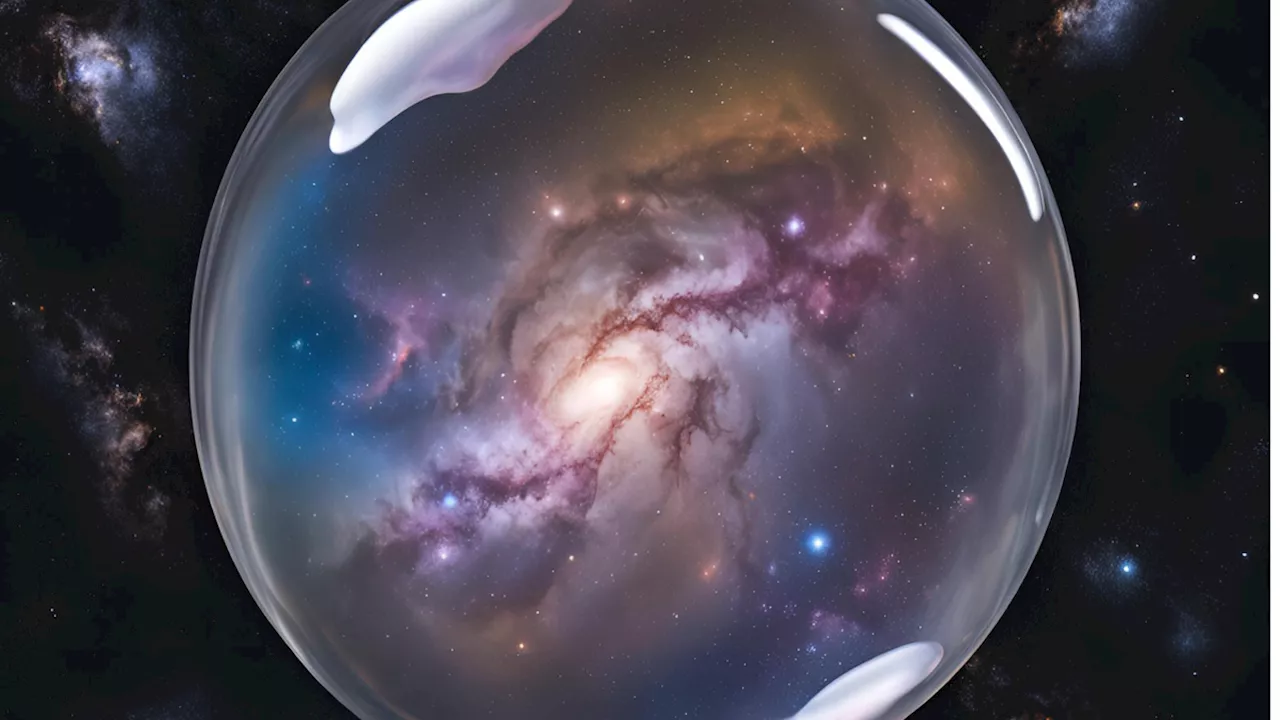A new study proposes that our location within a vast supervoid, the KBC supervoid, could explain the discrepancy known as the Hubble tension - the difference in measurements of the universe's expansion rate.
Jam packed issues filled with the latest cutting-edge research, technology and theories delivered in an entertaining and visually stunning way, aiming to educate and inspire readers of all ages. A galaxy sealed within a literal bubble.
Is the Milky Way's position in a supervoid responsible for the Hubble tension? New research suggests that a troubling disparity in the rate of expansion of the universe, known as the Hubble constant, may arise from the fact Earth sits in a vast underdense region of the cosmos. 'Voids are regions of the universe where the density is below average,' team member and University of Saint Andrews cosmologist Indranil Banik told Space.com. 'Supervoids are voids larger than about 300 million light-years.' The universe is expanding which means that the Hubble constant measures the speed at which distant galaxies recede away from each other. This may initially seem to make a discrepancy in rates of the Hubble constant a less pressing issue. After all, it doesn't affect how far you have to reach for your morning coffee. The problem is without understanding how fast the universe is expanding, cosmologists can't understand how the cosmos evolved, and our best model of this evolution, the Lambda Cold Dark Matter (Lambda CDM) or 'the standard model of cosmology,' is missing something. Breaking space news, the latest updates on rocket launches, skywatching events and more! Receive email from us on behalf of our trusted partners or sponsors A diagram representing the Keenan–Barger–Cowie supervoid amid the cosmic web of matter that spans the universe. The Milky Way is located off-center of the void. 'The KBC supervoid is a region that is about 20% less dense than the cosmic average, centered roughly where we are and extending out to about a billion light years,' Banik said. 'Typically, when people measure the Hubble constant using distances and 'This means that people typically don't look beyond about 2 billion light year
COSMOLOGY HUBBLE CONSTANT SUPERVOID MILKY WAY EXPANDING UNIVERSE
United States Latest News, United States Headlines
Similar News:You can also read news stories similar to this one that we have collected from other news sources.
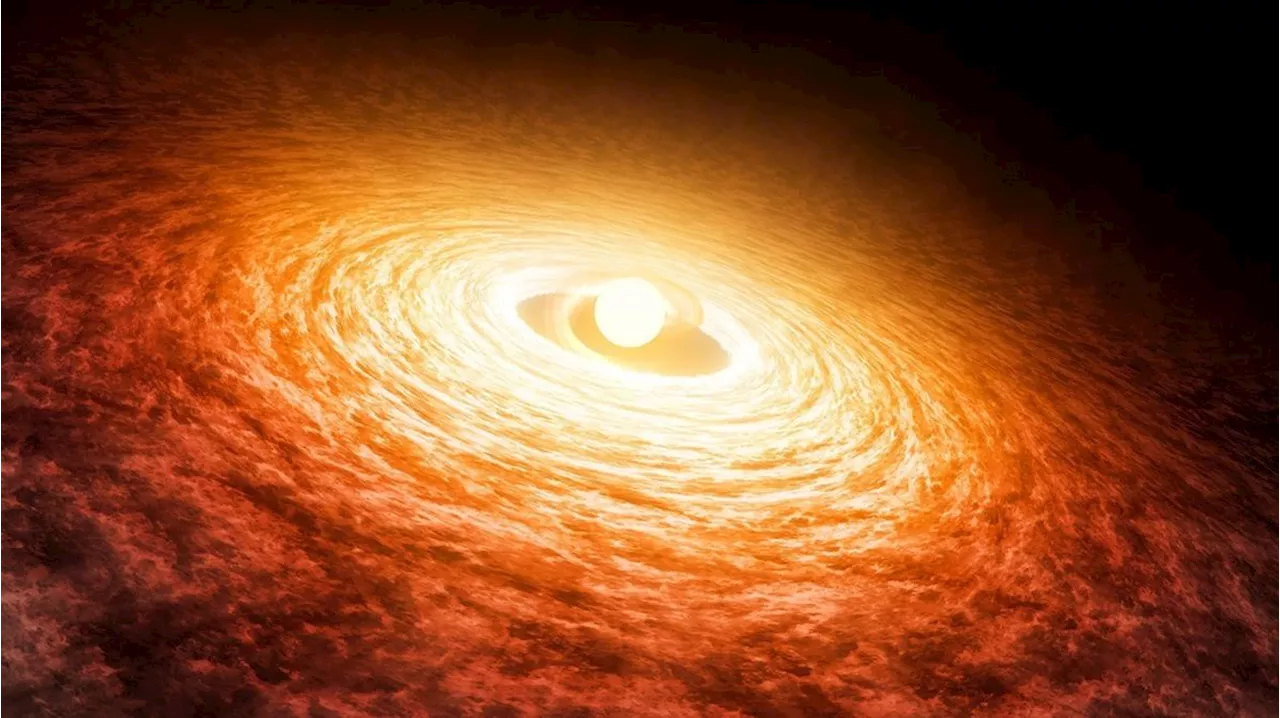 The Hubble and FU Orionis: a New Look at an Old MysteryFU Orionis and stars of its kind flare brightly in UV. New Hubble observations shed light on what's happening with these young stars.
The Hubble and FU Orionis: a New Look at an Old MysteryFU Orionis and stars of its kind flare brightly in UV. New Hubble observations shed light on what's happening with these young stars.
Read more »
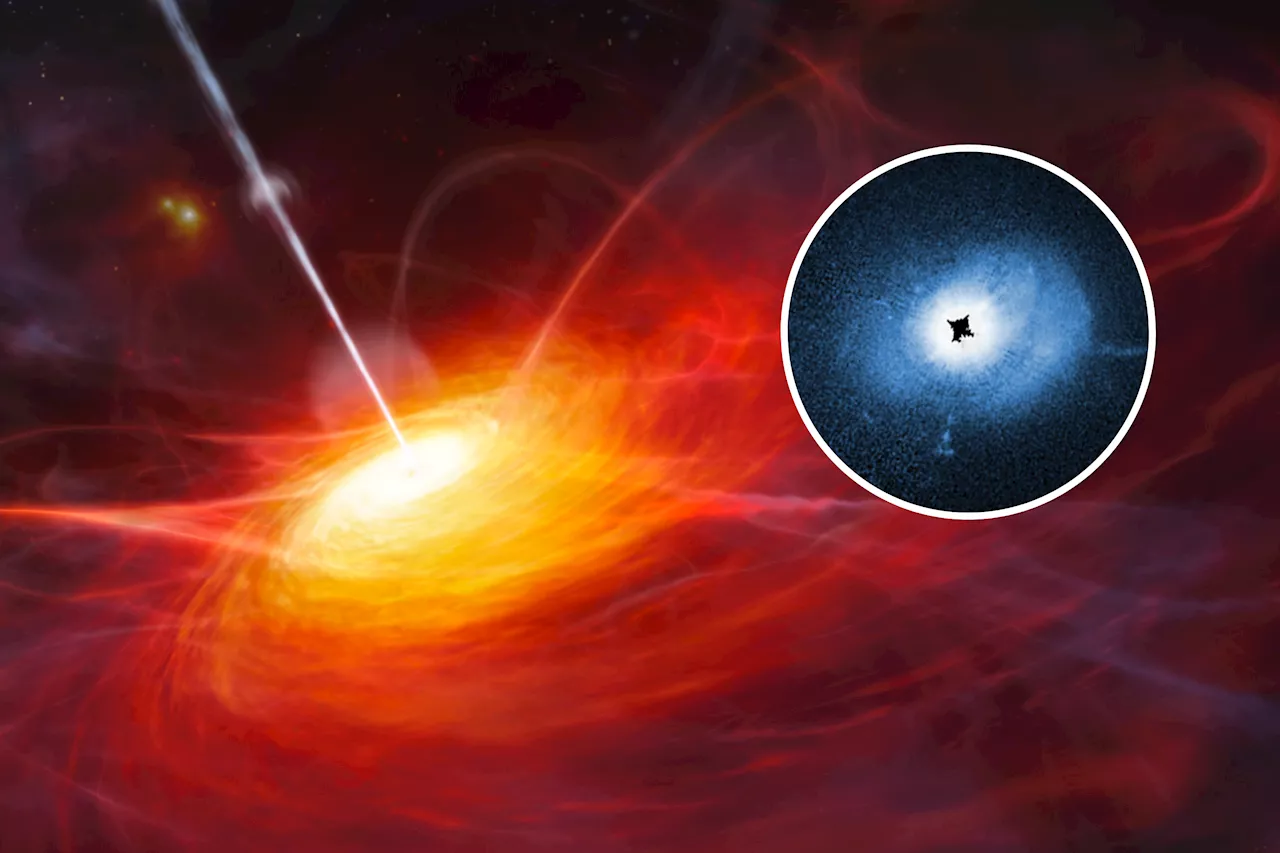 Hubble Captures Monster Black Hole That May Be Gobbling GalaxiesThe telescope has offered an unprecedented view of a supermassive black hole at the center of a quasar as it munches material in space.
Hubble Captures Monster Black Hole That May Be Gobbling GalaxiesThe telescope has offered an unprecedented view of a supermassive black hole at the center of a quasar as it munches material in space.
Read more »
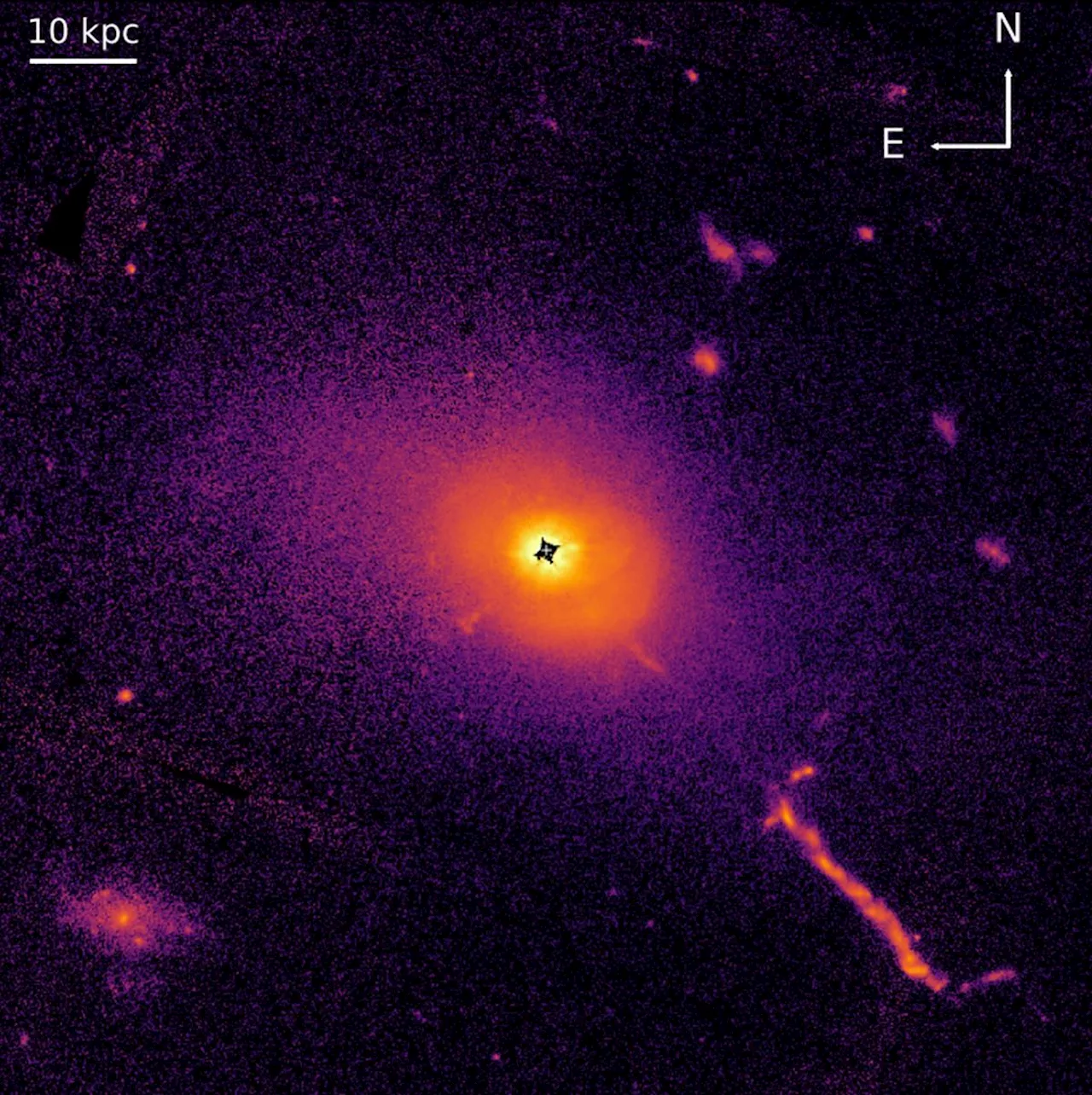 Hubble Gets its Best Look At the First QuasarThe Hubble Space Telescope got its best view yet of 3C 273, a distant quasar that blazes with the light of trillions of stars.
Hubble Gets its Best Look At the First QuasarThe Hubble Space Telescope got its best view yet of 3C 273, a distant quasar that blazes with the light of trillions of stars.
Read more »
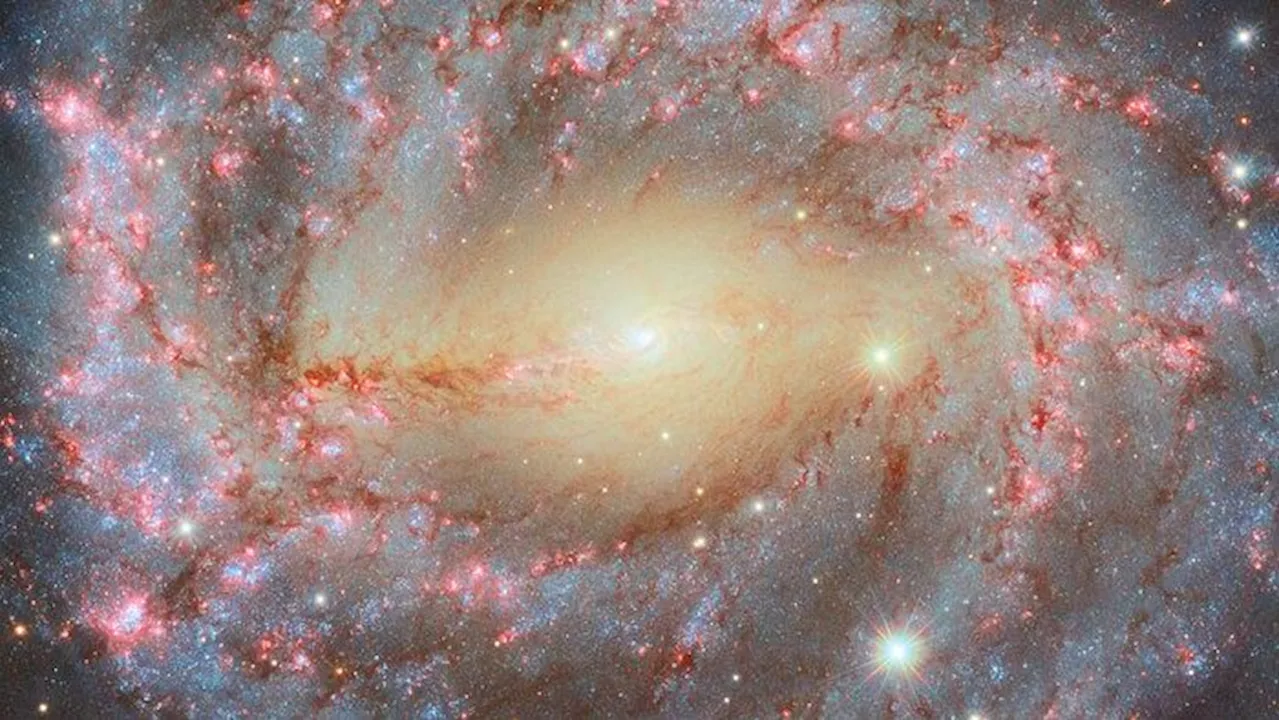 'Grand' spiral galaxy dazzles in new Hubble Telescope photoSamantha Mathewson joined Space.com as an intern in the summer of 2016. She received a B.A. in Journalism and Environmental Science at the University of New Haven, in Connecticut. Previously, her work has been published in Nature World News.
'Grand' spiral galaxy dazzles in new Hubble Telescope photoSamantha Mathewson joined Space.com as an intern in the summer of 2016. She received a B.A. in Journalism and Environmental Science at the University of New Haven, in Connecticut. Previously, her work has been published in Nature World News.
Read more »
 Feast your eyes on 10 years of Hubble images of Jupiter, Saturn, Uranus, NeptuneThe Hubble Space Telescope has been imaging the outer planets of our solar system for a decade, learning about their strange weather conditions.
Feast your eyes on 10 years of Hubble images of Jupiter, Saturn, Uranus, NeptuneThe Hubble Space Telescope has been imaging the outer planets of our solar system for a decade, learning about their strange weather conditions.
Read more »
![]() NASA's Hubble celebrates decade of tracking outer planetsA NASA Hubble Space Telescope observation program called OPAL (Outer Planet Atmospheres Legacy) obtains long-term baseline observations of Jupiter, Saturn, Uranus, and Neptune in order to understand their atmospheric dynamics and evolution.
NASA's Hubble celebrates decade of tracking outer planetsA NASA Hubble Space Telescope observation program called OPAL (Outer Planet Atmospheres Legacy) obtains long-term baseline observations of Jupiter, Saturn, Uranus, and Neptune in order to understand their atmospheric dynamics and evolution.
Read more »
